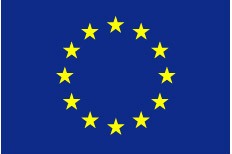|
Restart
Key Links and Documents
The European Union's Youth Programme
The YOUTH programme is the EU's mobility and non-formal education programme targeting young people aged between 15 and 25 years. The Programme is open to youth in 31 European countries. The YOUTH programme offers possibilities to young people in the form of both group exchanges and individual voluntary work, as well as support activities. The YOUTH programme started in spring 2000 but incorporates, and is based on, the experiences faced by the former Youth for Europe and European Voluntary Service programmes.
EU Employment and Social Affairs: The Social Protection and Social Inclusion Process
The Lisbon European Council of March 2000 asked Member States and the European Commission to make a decisive impact on the eradication of poverty by 2010. Building a more inclusive European Union is an essential element in achieving the Union's ten year strategic goal of sustained economic growth, more and better jobs and greater social cohesion. Go to the EU Social Inclusion website>>
Key documents
- Restart final project report
- White Paper on Youth
The White Paper on Youth is an important document for the future of young people in Europe. It was launched in November 2001, after a one and half year long process involving young people, experts in the youth-field, national authorities and NGOs in the member States and beyond.
It contains proposals for Community action in a specific area and presents a detailed and well argued policy for discussion and for decision.
- Evaluations of the Youth Programme
- Background documentation on the future programme in the youth field (2007-2013) Proposal for a new programme in the youth field
The European Commission has proposed a new programme in the youth field called "Youth in Action", the programme aims to develop a sense of personal responsibility, initiative, concern for others, citizenship and active involvement at local, national and European level among young people. The programme will also help to improve support systems for youth activities. The proposed budget is € 915 million.Download in: English French and German
- The future of education and citizenship policies: The Commission adopts guidelines for future programmes after 2006 (press release)
- Communication from the Commission - Making citizenship Work: fostering European culture and diversity through programmes for Youth, Culture, Audiovisual and Civic Participation (March 2004)
This communication presents in particular an outline of what will be the future actions of the programme in the youth field after 2006.Download in English French or German
- Background documentation for Youth policies and Youth programme
- EC Decision "Community Action Programme to Combat Social Exclusion
Top

With support from the European Union *
*Sole responsibility lies with the author. The European Commission is not responsible for any use that may be made of the information contained therein
|



